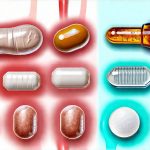Bladder reactivity, often experienced as urgency, frequency, or even incontinence, can significantly impact daily life. Many factors contribute to this sensitivity – from underlying medical conditions to lifestyle choices. While complex issues require professional medical evaluation and treatment, surprisingly simple adjustments to everyday habits can often provide substantial relief. One frequently overlooked element is the temperature of the fluids we consume. This isn’t about eliminating certain beverages; it’s about understanding how temperature interacts with your bladder and making informed choices that support comfort and control. The goal is not necessarily to eliminate symptoms entirely, but rather to lessen their intensity and frequency, allowing for a greater sense of normalcy and wellbeing.
The human body is remarkably sensitive to temperature changes, and the bladder is no exception. Extremely hot or cold liquids can act as irritants, triggering a more pronounced response from an already reactive bladder. This isn’t necessarily about burning or freezing; even moderately extreme temperatures – think very icy water versus steaming hot tea – can exacerbate symptoms. The physiological explanation lies in how temperature impacts nerve signaling and muscle contractions within the urinary tract. Essentially, drastic temperature shifts prompt increased neural activity that your bladder may interpret as a need to empty, even when it isn’t truly full. Understanding this connection is the first step toward mitigating these issues and finding strategies for improved comfort.
The Science Behind Temperature & Bladder Sensitivity
The relationship between fluid temperature and bladder reactivity stems from several interconnected physiological processes. When you ingest very cold fluids, your body expends energy to warm them up to core temperature. This process can cause vasoconstriction – the narrowing of blood vessels – in certain areas, potentially reducing blood flow to the bladder and increasing its sensitivity. Conversely, extremely hot liquids can directly stimulate thermoreceptors (temperature-sensing nerves) within the bladder wall itself, triggering an immediate urge to urinate. These receptors send signals to the brain indicating a perceived need for elimination, even if there’s no actual physiological requirement.
It’s important to note that individual sensitivity varies greatly. What might be comfortably warm for one person could trigger symptoms in another. Factors like pre-existing conditions (such as interstitial cystitis or overactive bladder), hydration levels, and overall health play a role. However, the general principle remains: significant temperature extremes are more likely to provoke a heightened bladder response. Think of it like this – your bladder prefers consistency. Sudden changes disrupt its natural equilibrium, leading to increased reactivity.
Furthermore, consider the impact on pelvic floor muscles. A sudden surge in temperature can cause involuntary contractions or spasms in these muscles, which support the bladder and urethra. These spasms contribute to urgency and potentially even leakage. Therefore, maintaining a more moderate fluid temperature supports optimal pelvic floor function and reduces unnecessary stimulation of the urinary tract. To learn more about supporting your pelvic health, explore body support techniques.
Finding Your Temperature Sweet Spot
Determining your personal “sweet spot” for beverage temperature requires some mindful experimentation and observation. There’s no one-size-fits-all answer because, as mentioned earlier, sensitivity differs from person to person. However, here’s a practical approach:
- Start with room temperature: Begin by exclusively consuming fluids at or near room temperature for a few days. This establishes a baseline and allows you to observe any immediate improvements in your symptoms.
- Gradual Adjustments: Slowly introduce slightly warmer or cooler beverages, one at a time, while carefully monitoring your bladder’s response. Pay attention to how long the effects last.
- Keep a Diary: Maintain a detailed diary of what you drink (type of beverage, temperature), and any associated symptoms (urgency, frequency, pain). This will help identify specific triggers and patterns.
Avoid drastic shifts in temperature – don’t jump from icy water to scalding hot tea. Instead, make incremental changes and assess the impact on your bladder. If even room-temperature fluids cause issues, it’s crucial to consult with a healthcare professional to rule out underlying medical conditions. Remember, this is about finding what works for you. Proper hydration is essential, so consider reviewing hydration strategies for sensitive bladders.
Beyond Beverages: Bath & Shower Temperatures
The influence of temperature isn’t limited to ingested fluids; external temperatures can also play a role. Prolonged exposure to very hot bathwater or showers can sometimes trigger bladder symptoms in sensitive individuals. This is because the heat can dilate blood vessels and increase sensitivity in the pelvic region, potentially irritating the bladder.
- Limit Bath/Shower Time: Reduce the duration of your baths and showers.
- Moderate Temperature: Maintain a comfortably warm, rather than scalding hot, temperature.
- Avoid Direct Pelvic Heat: Be mindful of directing excessively hot water directly onto the pelvic area.
If you notice that hot baths or showers consistently exacerbate your bladder symptoms, consider lowering the water temperature or shortening your time in the bath/shower. This is another example of how minimizing thermal stress can contribute to better bladder control and comfort.
Hydration & Temperature: A Balancing Act
It’s crucial not to confuse reducing beverage temperature extremes with reducing overall fluid intake. Proper hydration remains paramount for a healthy urinary tract. Dehydration concentrates urine, making it more irritating to the bladder – often worsening symptoms. The goal is to find a balance between maintaining adequate hydration and minimizing thermal irritation.
- Focus on consistent sipping throughout the day rather than large volumes at once.
- Choose room-temperature or slightly cooler water as your primary beverage.
- Avoid excessive caffeine, alcohol, and acidic drinks, which can also irritate the bladder regardless of temperature.
If you’re struggling to drink enough fluids due to bladder symptoms, consider breaking up your intake into smaller, more frequent sips. This reduces the pressure on your bladder and minimizes urgency. For further insight into managing hydration, explore morning hydration techniques. Hydration is key – just be mindful of the temperature. Understanding how to adjust your diet can also help; review these diet diary tips for tracking flare patterns.
To create a more calming environment around bladder health, consider exploring home environment tips for relaxation and practicing stillness.
Finally, remember to prioritize consistent routines to support bladder health; check out these routine-based calm tips for clarity.





















